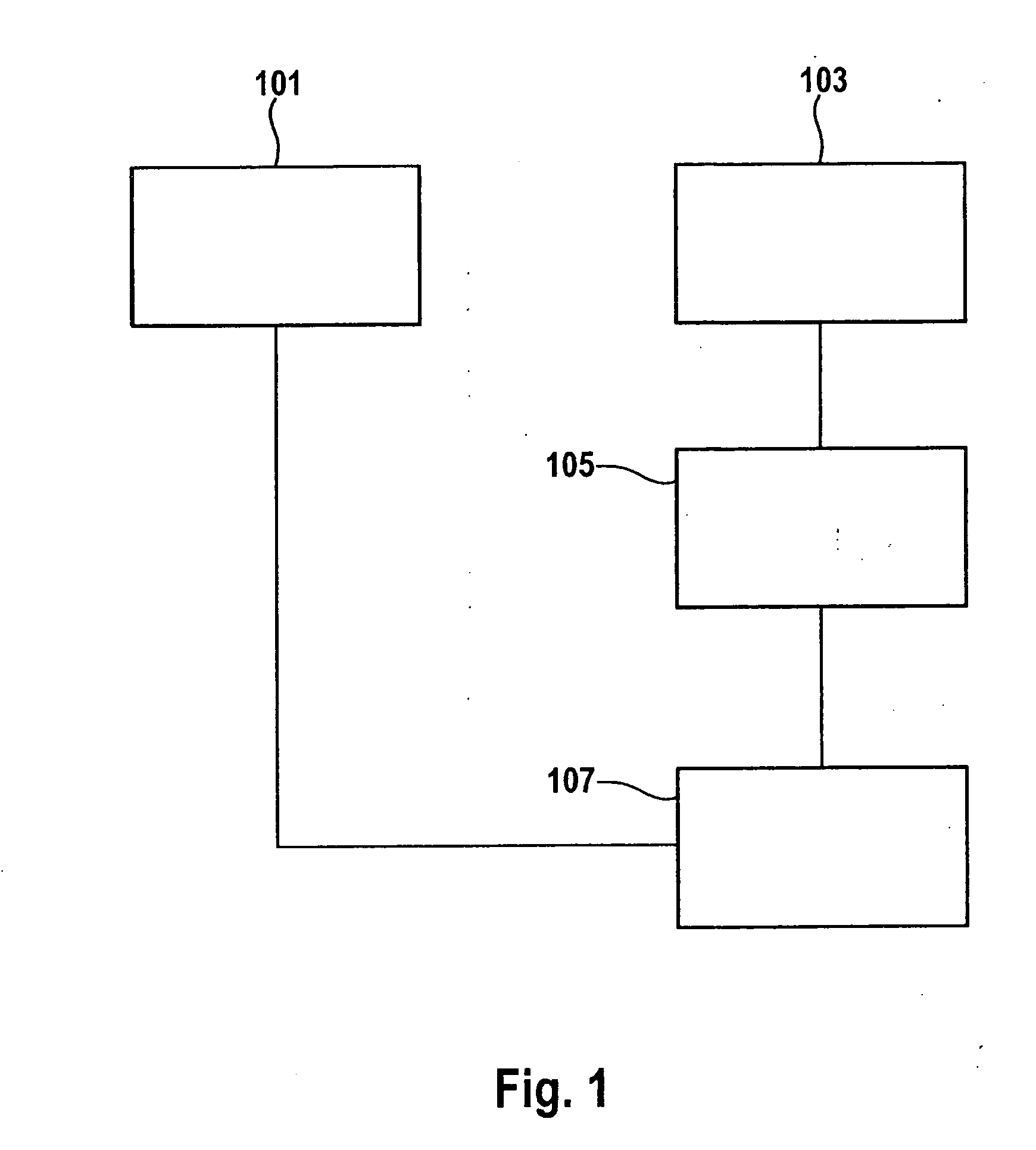Method for reducing a driving power of a vehicle drive
- Summary
- Abstract
- Description
- Claims
- Application Information
AI Technical Summary
Benefits of technology
Problems solved by technology
Method used
Image
Examples
Embodiment Construction
[0023]As FIG. 1 shows, a temperature difference between a temperature of at least one component of the vehicle drive and a temperature threshold value is detected in step 101. At the same time or previously or subsequently, an instantaneous driving state of the vehicle drive, i.e., the driving state in which the vehicle drive is at the moment, is detected in step 103. In step 105, it is established, for example, on the basis of one comparison or multiple comparisons, whether or not the instantaneous driving state allows for a reduction in the driving power. Subsequently, in step 107, the driving power of the vehicle drive is reduced for lowering the temperature of the at least one component in order to increase the temperature difference for providing a temperature reserve, for example, for a subsequent driving state if the instantaneous driving state allows for a reduced driving power. In other words, the driving power is reduced only if it has been established that the instantaneo...
PUM
 Login to View More
Login to View More Abstract
Description
Claims
Application Information
 Login to View More
Login to View More - R&D
- Intellectual Property
- Life Sciences
- Materials
- Tech Scout
- Unparalleled Data Quality
- Higher Quality Content
- 60% Fewer Hallucinations
Browse by: Latest US Patents, China's latest patents, Technical Efficacy Thesaurus, Application Domain, Technology Topic, Popular Technical Reports.
© 2025 PatSnap. All rights reserved.Legal|Privacy policy|Modern Slavery Act Transparency Statement|Sitemap|About US| Contact US: help@patsnap.com


